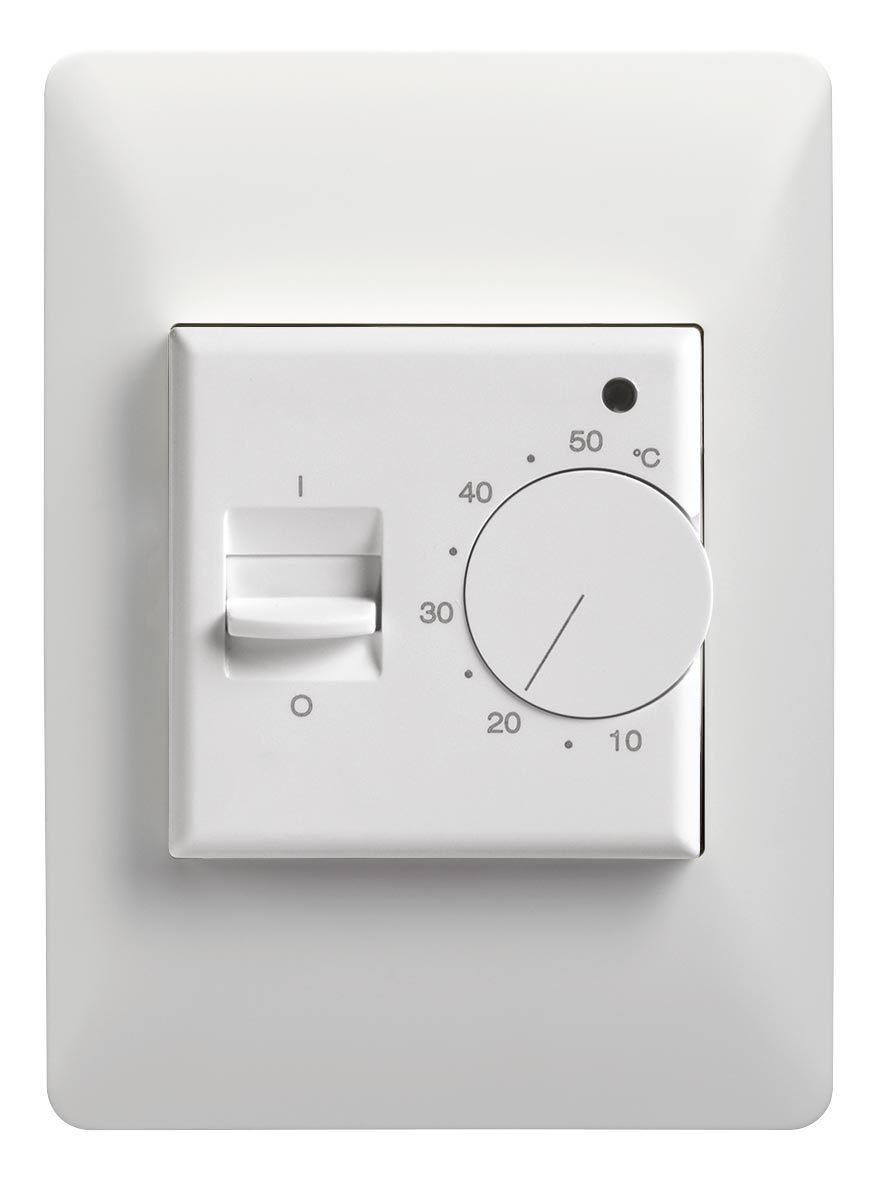PRODUCT RANGE
MTC Manual Thermostat
$178.20
MTC thermostat
MTC is an electronic heating thermostat designed to be installed in a standard single gang electrical box with a minimum width of 2-1⁄4”. Once installed, it requires no maintenance.
An LED illuminates to indicate a call“ for heating, this also aids in system testing. An ON/OFF selector switch on the front of the cover makes system operation is extremely simple.
FLOOR SENSOR INSTALLATION
The sensor shall be mounted in a conduit which should be sealed and placed as high as possible in the concrete, etc. The sensor wiring may be extended up to 150’ (50 m) using 18 gauge wire and the wiring resistance shall not exceed 20 ohms. Sensor wires must be kept in a separate conduit, away from all other wirings. The sensor and wires must be protected from damage during the installation. If the shielded wire
is used, it must not be grounded but connected to terminal 6 on the thermostat.
Features
Push-on/off button
Manual non-programmable thermostat.
Temperature control knob.
Remote Floor sensor
Locking mechanism
Can be set to limit temp (min & max)
Heat on indicator light
TECHNICAL DATA
Power supply 240V AC ±10%, 50-60 Hz
Output relay, SPST (resistive load) 16A
Built-in switch 2 pole, 16A
Ambient operating temperature 32-122°F (0-50°C)
Scale limitation- minimum and maximum
Scale range – 50-122°F (10-50°C)
On/Off differential – 0.7°F (0.4°C)
Enclosure – IP20
Dimensions (HxWxD) – 115 x 84 x 50 mm
